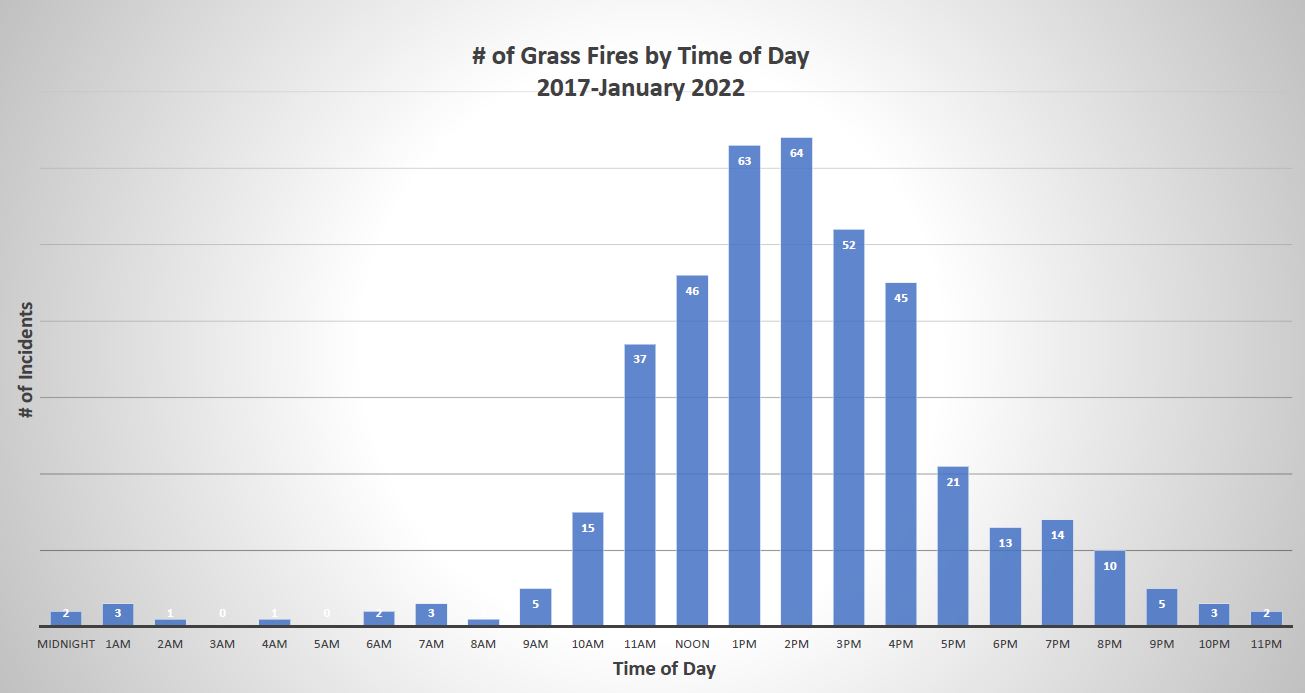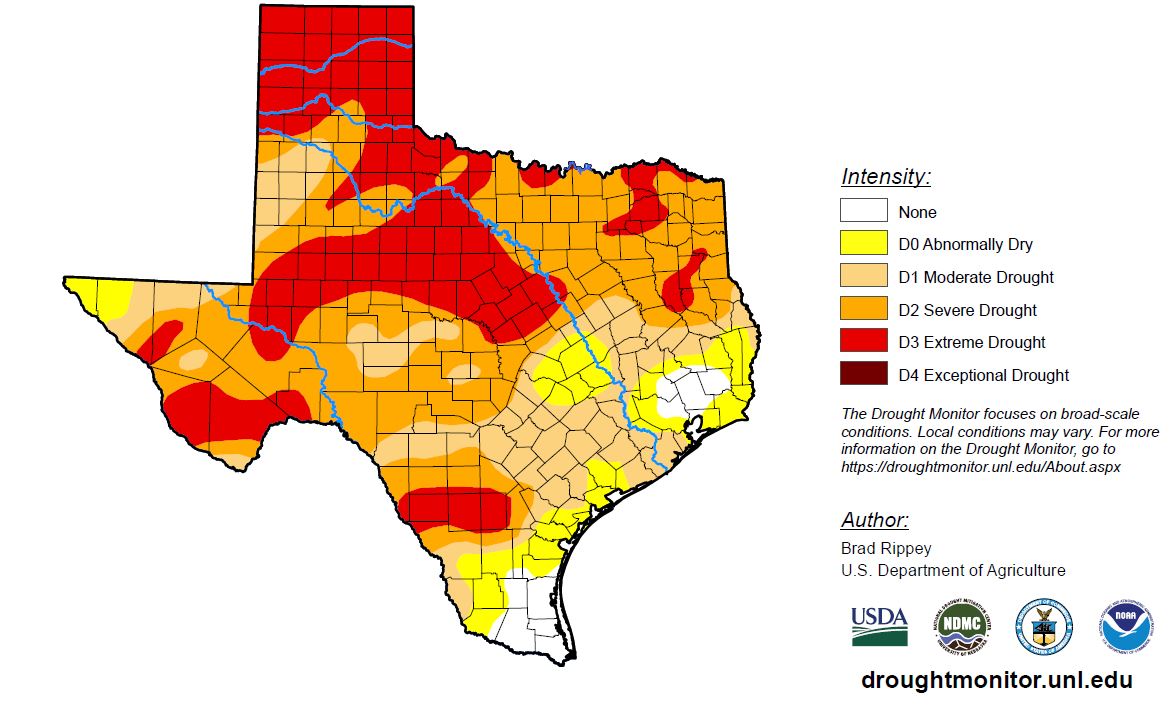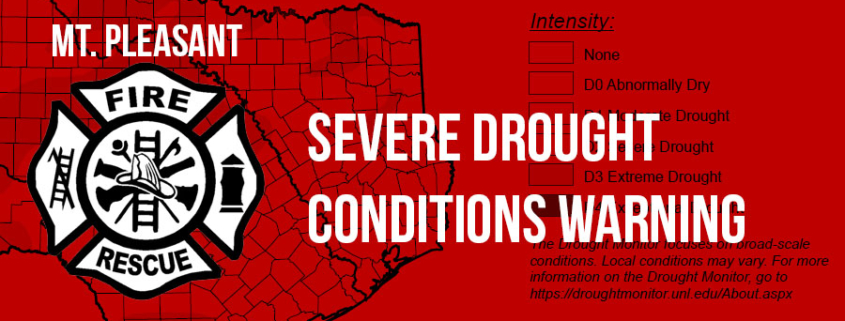SEVERE DROUGHT CONDITIONS LEAD TO EXTREME FIRE CONDITIONS
Most of the State of Texas is experiencing severe to extreme drought conditions. Titus county is currently in the Severe Category and very close to reaching the Extreme Category soon.
The charts below illustrate the conditions which are being monitored by the Titus County Emergency Management Team. Any fire incident could easy spiral into an incident that would put our first responders, both professional and volunteer, as well as citizens and private property at risk.
Your help in avoiding or minimizing activities that could spark a fire is requested. That includes outdoor burning, grilling or even accidently dropping a cigarette butt on the ground instead of extinguishing and properly disposing of the butt.
Please be aware anyone who does conduct an outdoor burning that becomes out of control will be liable for any and all damage to the property of others.
If you have questions about outdoor burning, please contact the Mount Pleasant Fire Department at 903-575-4144. We also encourage you to share this post with anyone you believe would benefit from the information.
FIRE STATISTICS
GRASS FIRES BY TIME OF DAY

FIRE BEHAVIOR/FIRE DANGER WORKSHEET
Download the latest worksheets to learn about the factors, thresholds and current forecast for fire behavior/fire danger.
FUEL CLASSIFICATIONS
Moisture content is the single most important factor in determining how well a fuel will ignite and burn.
There are 2 types of fuel:
- Live-Living plants such as grasses, shrubs, trees. The moisture content in live fuels is controlled by the plant species, age of the plant, time of year and drought conditions.
- Dead-The moisture content in dead fuels is controlled by humidity, precipitation, wind, sunlight and the size and shape.
For dead fuels, the size and shape of the fuel determines how the fuel reacts to its environment and how long it takes to dry out or absorb moisture.
Fuels are classified as 1-, 10-, 100- and 1000-hour fuels:
- 1 hour fuel 0-1/4” in diameter, such as grass, leave, pine straw, small twigs
- 10-hour fuel ¼”-1” in diameter, such as large twigs and tree limbs
- 100-hour fuel 1”-3” in diameter, such large limbs and small trees
- 1000-hour fuel 3”-8” in diameter, such larger trees
So, a 1-hour fuel can go from having too much moisture content to burn, to having next to no moisture content in an hour. An example of this occurred on January 16. Snow was still on the ground that morning from the snowfall the night before. But by 2 PM the grass(1-hour fuel) had dried out enough that a significant grass fire occurred due to the drying caused by the sun and the wind.
FIRE BEHAVIOR
The two things that affect fire behavior (how hard the fire is to control/extinguish) the most are relative humidity and wind. If the relative humidity is low, below 36%, and no wind the fire behavior increases. We have had the relative humidity in the teens the last few days. If there is wind, even as low as 10 MPH, and relative humidity above 36%, the fire behavior increases. When there is low relative humidity and wind then fire behavior can become extreme and be very difficult to control/extinguish.
As shown in the Fire Behavior/Fire Danger Worksheet, there are other factors that are associated with determine fire behavior/fire danger. However, most of the fires we respond to involve 1-hour fuels because of how easy the moisture content can be lost and how easy they are to ignite so the factors associated with that type of fuel is what most concerns us.
The forecast for later in the week is to have some rain or possible snow/sleet. That will not get our area out of the drought situation we are experiencing and will only provide short term relief for moisture content in the fuels which can give a false sense of security that doing outdoor burning would not be a problem. If you have any questions, please contact the fire department at 903-575-4144.
TEXAS DROUGHT MONITOR 01/25/22 – Released 01/27/22



